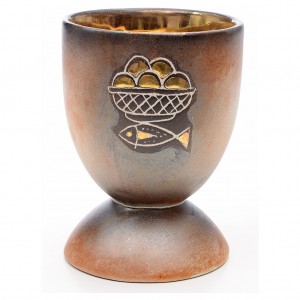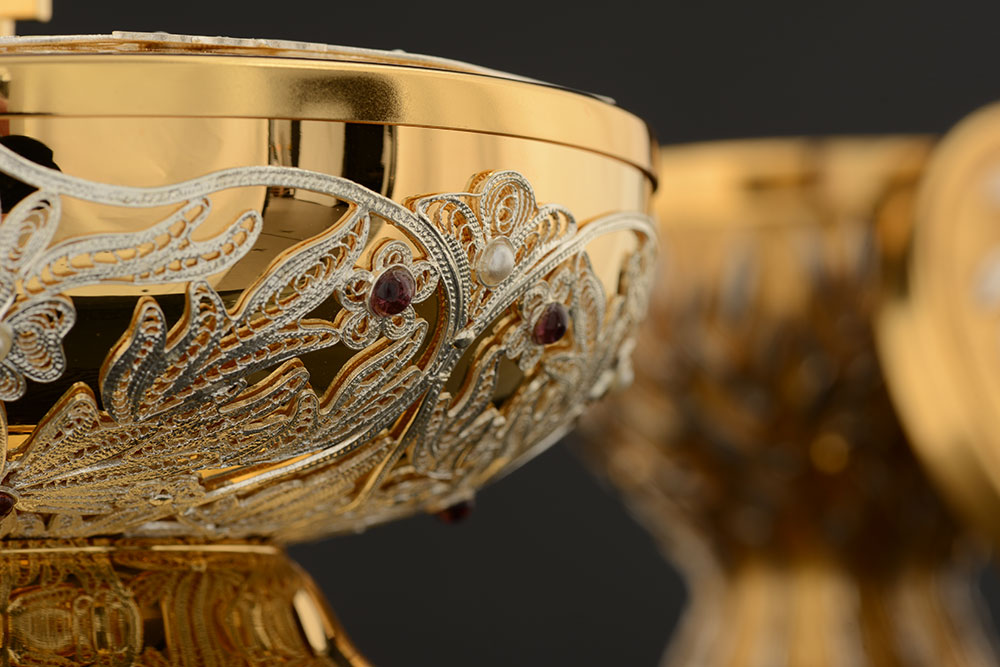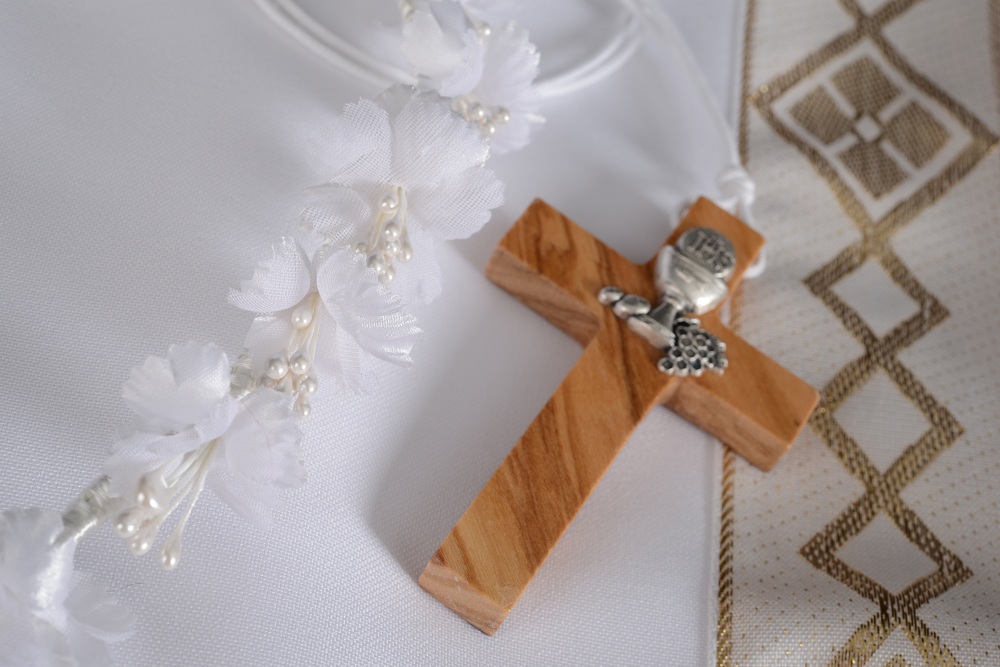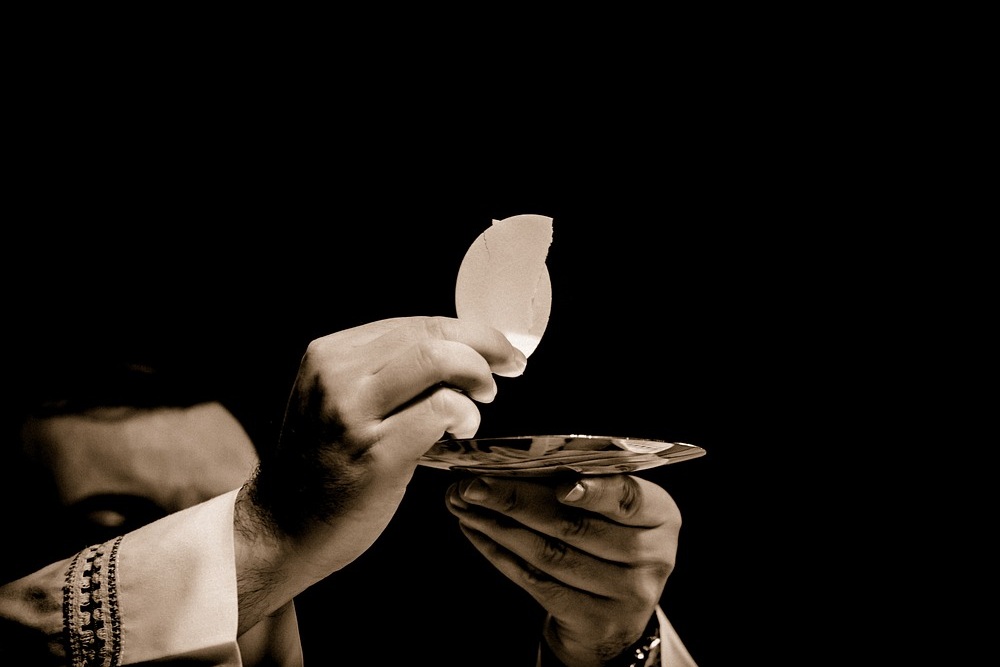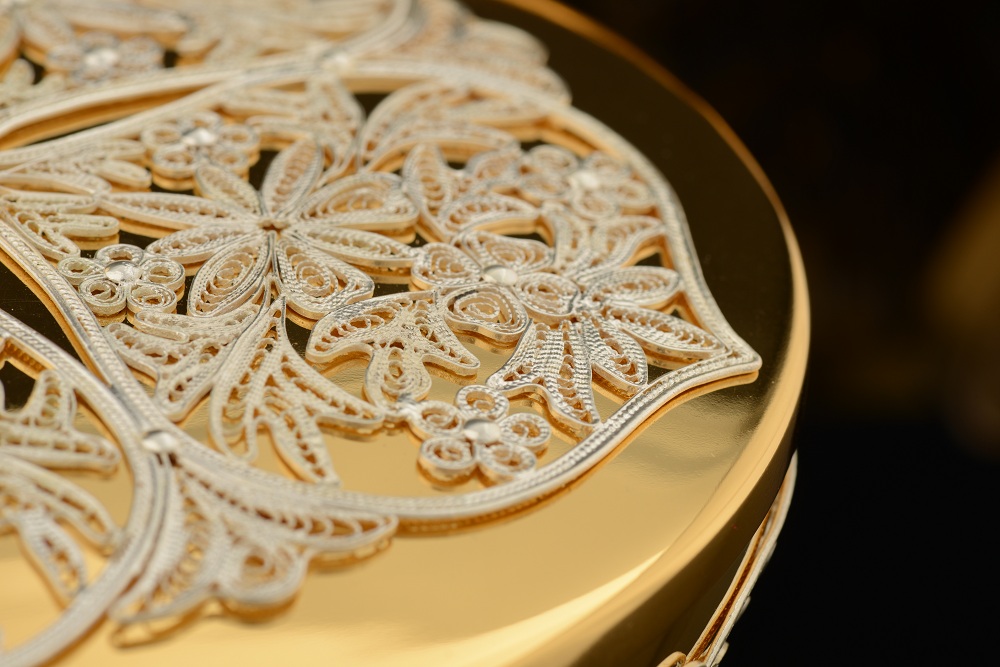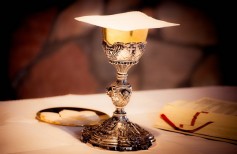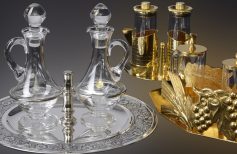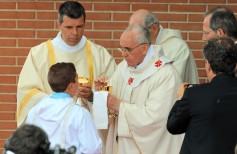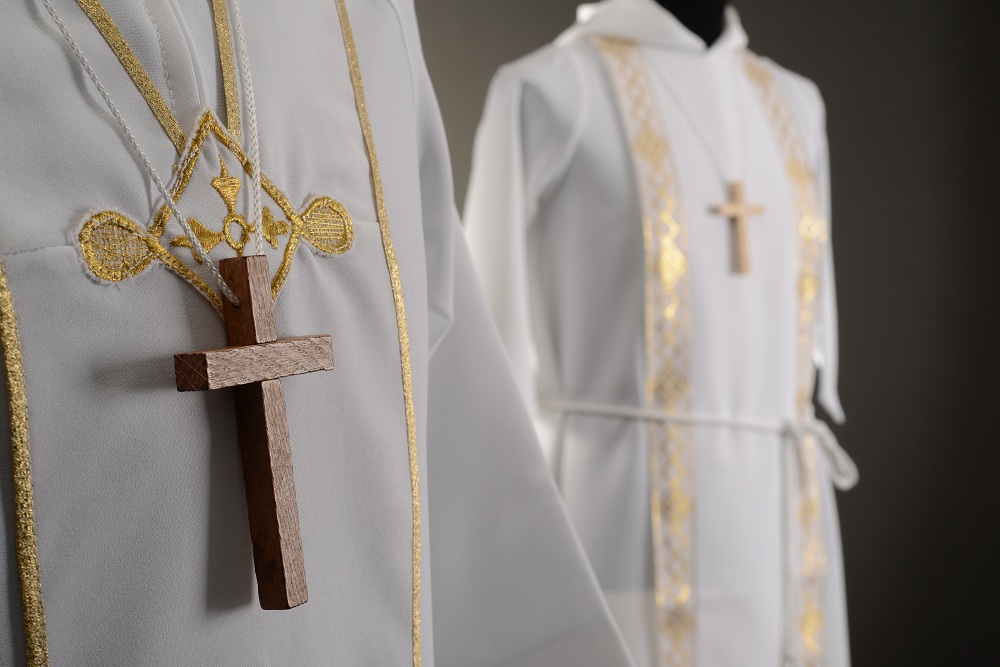The practise of passing round a chalice during a meal, from which all those present drink as a sign of communion, is as ancient as humanity itself. For a Christian, there is no greater moment than the communion of the Eucharist, when the bread of life, and the chalice of salvation are offered to all the faithful in order that they may communicate with Christ and give thanks to God.
The chalice of communion has been present in liturgy since the beginning. Initially, it would have been a cup to preserve the wine to be blessed. Therefore, presumably it would have been a humble object, for domestic use. With the passing of centuries, and the refinement of religious ceremony, even the communion chalice saw an evolution in its form and materials. Over time, they became ever more precious, as they were often made from gold and silver, with uniquely carved and chiselled patterns, and included ornaments made with precious stones. Although nowadays there is a preference for simpler forms, and materials to make communion chalices, they must nonetheless maintain a dignified character. preferably the inside of the chalice must always be golden. Nevertheless, communion chalices of other materials are also used such as those made of wood (in particular of olive trees), and occasionally in other materials such as ceramic or glass.
During the preparation of the Eucharist, the communion chalice is subject to a particular ritual, during which certain liturgical objects and sacred linen are used, in a precise order. To understand the meaning of the Eucharist you must understand that of the chalice and wine. Jesus himself mentions it with regards to his sacrifice to confirm the new and eternal alliance. Wine therefore, to remember the promises made by God to his people, to celebrate an ancient and eternal alliance, which renews itself, to a time which symbolises passion and hope. A miraculous gift which is born from terrible pain, from the sacrifice of Christ in remission of all the sins of man. A sacrifice and alliance which the faithful are called to remember every day, dinking from their personal “communion chalice” in the acts of daily devotion, in the gesture of charity. In this way, the miracle is repeated and the chalice of passion is transformed into a chalice overflowing with infinite joy.
Here you can find our selection of communion chalices, available on our Holyart.co.uk catalogue.
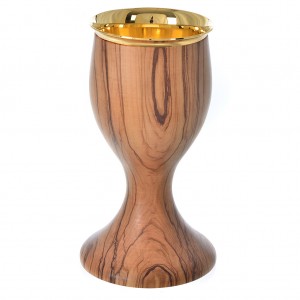
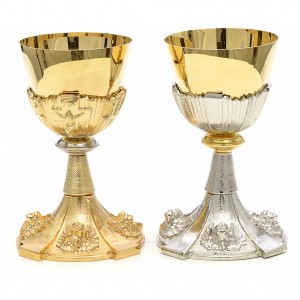
with Angels
